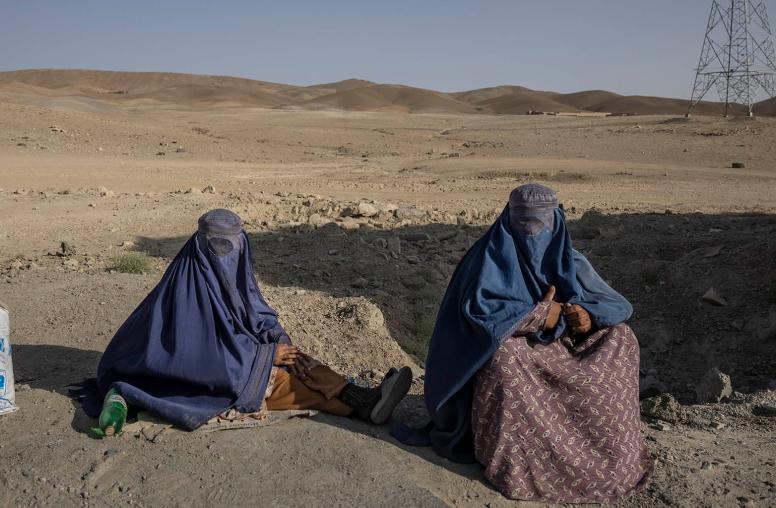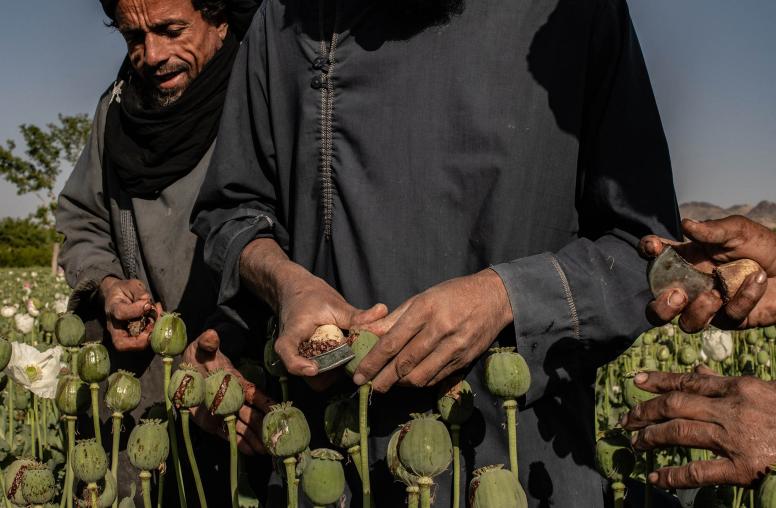Afghanistan Donor Conference 2020: Pitfalls and Possibilities
This year, planning international aid must navigate donor differences, a fractured government and fragile Taliban peace talks.
When Afghan officials and international donors meet next month to consider future aid commitments to Afghanistan, they will face a changed situation from their last gathering four years ago. Then, the focus was on tying financial assistance to government reform in the midst of ongoing war with the Taliban; peace was barely on the agenda. Now, peace talks between the Taliban and the government have begun, and a new Afghan administration is still taking shape with an agreement that resolved the disputed 2019 presidential election. Meanwhile, fighting and casualties remain at unsustainable levels and the country is reckoning with the COVID-19 pandemic and its consequences.

Amid the complexities of this crucial and delicate moment, the outcome of the donors meeting, to take place in Geneva, is uncertain: It could effectively promote development and peace in Afghanistan, or it could turn out to be counterproductive. That will depend on whether participants come together and focus on a four-year development and peace framework or allow the meeting to be hijacked by one of several conflicting agendas that might undermine the peace process. While the more than 70 nations and organizations at the conference share an interest in Afghanistan’s development, they also have differing political goals.
In the present circumstances, the high-profile format and four-year time horizon of the Geneva meeting comprise a bold initiative, injecting a welcome medium-term development perspective despite all the short-term uncertainties. It also carries significant risks, ranging from the government failing to meet donors’ expectations to grossly inadequate aid pledges to tensions over peace negotiations. In the Afghan context, where overall risks are high and the current situation fraught with danger, informed risk-taking by the international development community is likely to be an important ingredient in helping make peace sustainable.
Similar to past quadrennial donor meetings in 2016 (Brussels) and 2012 (Tokyo) as well as earlier regular meetings, the Geneva conference on November 23-24 is billed as a “ministerial level pledging conference.” Its purpose is to commit the Afghan government and the international community to shared development objectives for 2021-2024 as well as ensure financial support for the Afghan administration. Other anticipated outcomes of the conference include a joint political declaration—not a feature of past quadrennial donor meetings—and a new aid architecture and mutual accountability framework.
Opportunities
Geneva will bring into the public discourse the views of development donors, which have been largely missing from the current peace talks and from political dynamics on the non-Taliban side. It will provide an opportunity for Afghanistan’s partners to make explicit what they see as the parameters for continuing to provide significant development assistance and support to the Afghan government budget. This signaling will be directed at the Afghan administration, to be sure, but also, indirectly, at the peace process and at the Taliban as a potential future partner in the government.
With its four-year framework, it will also at least partly offset the short-termism that pervades issues of politics, peace, and security in Afghanistan. Donors could signal continuing commitment to Afghanistan’s development, providing an antidote to concerns about “aid following the troops” once U.S. forces leave the country, possibly as early as May 2021.
Pitfalls and Risks
While past meetings generated disappointment and cynicism after promised levels of aid failed to materialize or to deliver expected results, this event sets up the opposite risk. If aid commitments fall precipitously short of the 2016 Brussels pledge of $3.8 billion a year (a total of $15.2 billion for 2017-2020), the Afghan state and its development achievements would be in danger. Both a low level of assistance pledges and going for one-year aid commitments this time—though the latter would be from some perspectives understandable—may feed the abandonment narrative that is already widespread among Afghans and clash with the conference’s four-year development framework.
There is also a risk that donors will force the Afghan government to promise reforms that far exceed its political bandwidth and technical and bureaucratic capabilities. Then, if donors’ expectations go unmet, future aid may be in jeopardy. The Afghan government has overpromised and underdelivered in past mutual accountability frameworks, and this counterproductive pattern must not be repeated.
Threading the Needle
While the structure for the Geneva conference—co-organized by the Afghan government, Finland, and the United Nations—is in line with past practice, in the current context it gives rise to various dilemmas.
First, inviting the Taliban would be unacceptable to the Afghan government, for understandable reasons. Yet the group is a major stakeholder in Afghanistan’s future and in the peace negotiations. Its exclusion misses an opportunity to directly expose Taliban leaders to the complexities of managing international aid and to donors’ expectations regarding human, gender, and political rights.
Second, past meetings gave the Afghan administration a showcase for its achievements and a forum to advance plans for reforms tied to state-building, an agenda the international community strongly supported. This focus could now be problematic. For peace negotiations to progress toward an agreement, the current administration almost certainly couldn’t be left unchanged over the next four years. Thus, the Geneva meeting and its four-year time horizon (coinciding with the rest of President Ashraf Ghani’s five-year term) could send signals that may be seen as benefiting and entrenching the current administration. Whereas the U.S.-Taliban discussions and agreement arguably undermined the position of the Afghan government, the Geneva meeting may carry the opposite risk.
Third, the joint political declaration expected from the conference will be challenging to put together. The Ghani administration probably would resist including anything raising questions about its longevity, but the president’s political opposition might resent an ironclad guarantee for Ghani’s term. The administration might also try to ensure that the declaration supports and reaffirms the existing Islamic Republic constitution and state structure, to which the Taliban would react badly.
The Afghan government, therefore, will face a challenging dilemma at Geneva. Should it try to use its platform to reinforce its negotiating positions vis-à-vis the Taliban? Or would it do better to appear at least somewhat open and flexible—particularly if there is pressure from donors? The government may be tempted to put forward a hard line and try to co-opt development partners to get behind it, but this may alienate key donors that support a peace process that will most likely require difficult compromises with the Taliban.
Ways Forward
To exploit opportunities and contain risks at Geneva will demand deft diplomacy, careful planning, and thoughtful management of the event. Donors need to navigate between strong statements upholding fundamental principles that constitute conditions for continued aid and avoiding specific positions that could become untenable as the need for compromise arises to reach a sustainable peace agreement.
The four-year planning horizon for aid should be maintained. If donors decide to limit their pledges to just a year or two, they should clearly state that similar amounts of assistance will continue in following years, providing agreed-upon conditions are met.
With regard to the level of aid, there is a need for donors to signal predictable, stable or modestly declining amounts. Any reductions should be concentrated in off-budget aid while assistance through the Afghan budget is maintained, contingent on effective use of funds and containing corruption.
Donors may clearly state their conditions for assistance—including protection of gains in human development and rights. However, they will need to avoid appearing committed to a particular Afghan administration or to the current one’s five-year term, which would rule out other possible formulas for a peace deal. Such nuancing could take the form, for example, of a clear statement in the conference communique, noting that aid pledges and indications are to support the Afghan people and key enunciated principles, not for a particular administration or leaders.
In the new aid architecture and mutual accountability framework that is expected to come out of the Geneva conference, donors and government should avoid setting unrealistic expectations and instead seek stringent prioritization of expenditures and aid—in other words, doing less with less but doing it better. That means focusing on essential government functions and a few core development programs that have good track records and avoiding new or scattered initiatives with marginal impact or those that would take too long to achieve results.
Donors should also create aid-linked incentives to improve the functioning of core institutions and programs by zeroing in on what makes them work. The essential elements are well understood: competent, empowered Afghan management teams with an adequate degree of political insulation and containment of corruption.
Finally, the conference and the conditions placed on aid pledges need to underline the importance of Afghanistan increasing its own contribution to national development and starting to convert the rhetoric of “self-reliance” into reality. Securing more revenue through improvements in the Ministry of Finance—and curbing widespread corruption in revenue collection—must become a priority, one that over time will begin reducing Afghanistan’s need for foreign aid.



